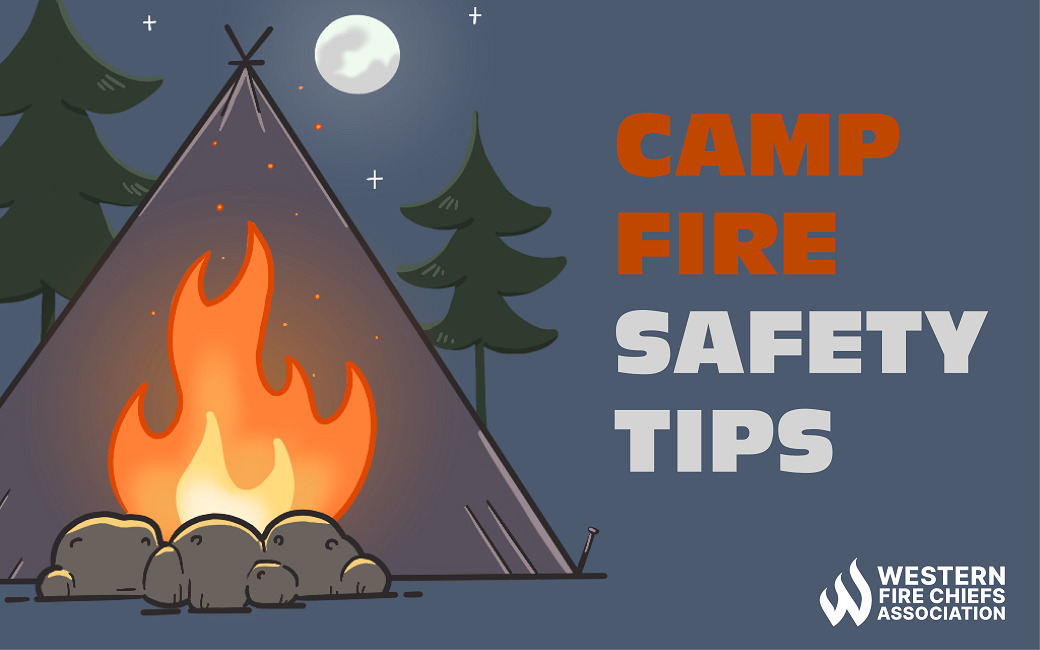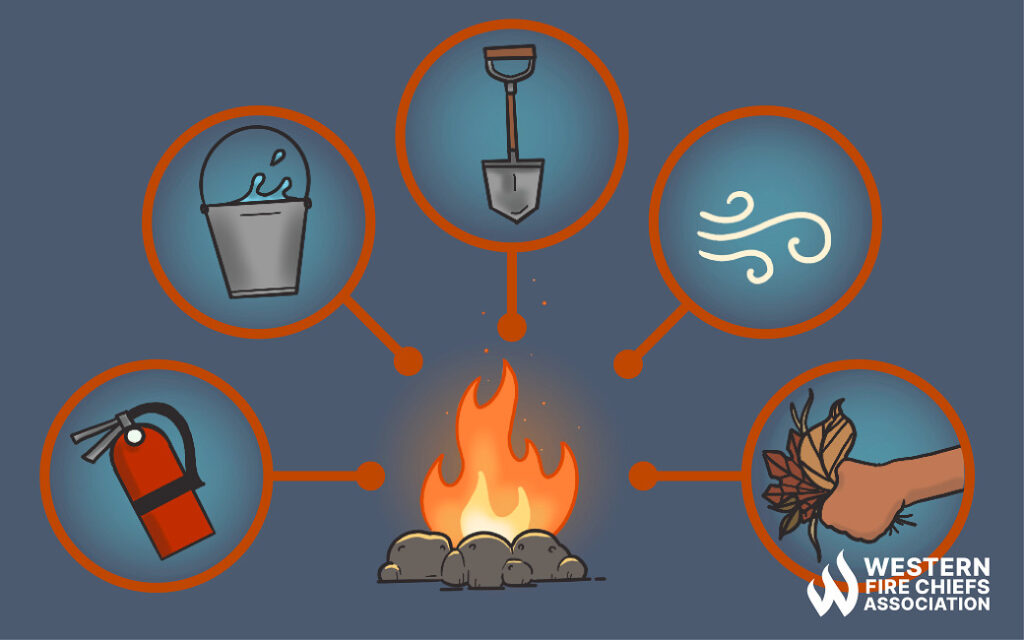Fire Pit Safety Tips
Stay safe around the campfire with tips from the Western Fire Chiefs Association. Learn essential precautions and practices for a worry-free outdoor campfire.
Enjoy the great outdoors safely with our top campfire safety tips. Learn how to prevent accidents and protect yourself and the environment with guidance from the WFCA.
Published:July 11, 2023
Edited:March 1, 2024

Enjoy the great outdoors safely with our top campfire safety tips. Learn how to prevent accidents and protect yourself and the environment with guidance from the WFCA.
Fire is a useful tool to heat food, keep warm, and gather around for stories and songs while camping. However, campfires are still a danger in nature, especially if they grow out of control and start wildfires. You can help protect natural landscapes by ensuring campfires are safe and contained.
In the United States, humans cause over 90% of all annual wildfires.1 A 2020 study of wildfires in California found that wildfires caused by humans have more extreme fire behavior, moving quickly and burning more intensely than wildfires with natural causes. This destroys more trees and vegetation, even in ecosystems that have adapted for regular fires.2 Maintaining control of any potential fire hazards is the best way to protect nature while camping and enjoying the great outdoors.
Some states require campfire permits, and areas may have restrictions on campfires or portable stoves when there is a high risk of fire.3 Make sure to check the local wildfire risk level and if there are any burn bans. There may be signs posted, and a ranger’s station will have current campfire regulations.4
Many campsites have firepits or metal fire rings so guests can build a campfire without the fire spreading. Make sure there are no limbs or branches hanging over the pit and nothing flammable on the ground within 10 feet of the fire. Consider how to protect the fire from wind gusts. Build your campfire downwind and 15-25 feet away from your tent and other combustible materials.
If you are camping in an area without a firepit, dig a pit in an open area away from overhanging branches that could catch fire. Circle the pit with rocks, keeping the 10-foot area around the pit clear of any potential fuels.5
Use local firewood to start a fire, either by collecting your own wood or buying it in the area. Insects and diseases can live on firewood, and burning outside wood may introduce harmful pests into forests.4 You should not cut trees or branches for fuel; live materials will not burn.6
Start your campfire with dried leaves, grass, or other tinder, then add additional small twigs and sticks as kindling. Never use lighter fluid, gas, or other flammable liquids to start a campfire. As the fire grows, add larger pieces of wood that will burn for longer and put off more heat.4 A small, contained fire will produce plenty of heat for cooking and warmth.
In the U.S., campfires are the leading cause of children’s camping injuries.4 Do not allow children or pets around the campfire without supervision. Kids should never play with the campfire or pull sticks out of the fire. Do not allow anything but wood to go into a burning fire.7 You should also avoid lighting campfires on dry, windy days; it is easy for fires to spread out of control under these conditions.8

When starting a campfire, have a bucket of water nearby to extinguish any flames that may get out of control. You can also water down the area a few feet around the firepit, so if stray embers or flames escape, they will not be able to catch the area on fire. Shovels help break up flammable materials in a campfire, which will reduce the amount of time it takes to burn itself out. Burying a fire in sand or dirt will extinguish and cool the embers.
Make sure you put your campfire out completely if you are going to bed or leaving the site, even if it is only for a short hike. Douse the campfire with water or dirt, stir the charcoal and embers with a shovel, and douse it again until cool.9 Test the doused fire with the back of your hand—if it is too hot to touch, it is not completely extinguished.5
Stay safe around the campfire with tips from the Western Fire Chiefs Association. Learn essential precautions and practices for a worry-free outdoor campfire.
Discover essential firework safety tips to ensure a dazzling display without accidents. Learn how to celebrate responsibly with expert guidance from WFCA.
Explore the role of AI in wildfire prediction with guidance from the WFCA. Learn how advanced algorithms and data analytics enhance early detection and response.